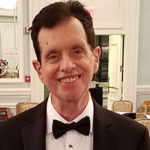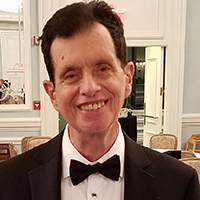
Artificial intelligence is a double-edged sword. On the one hand, it is seen as a boon that will propel us, Jetsons-like, into a century of self-driving cars, drones and perpetual leisure; on the other, it is viewed as a bane that will deprive most of us of a job and an income. History suggests that the truth is somewhere in between, that AI will create opportunities even as it displaces jobs — but only if there is a fundamental restructuring of the way people go about their business.
The world has been divided into nation-states since the Treaty of Westphalia, but it has become somewhat axiomatic to assert that they and the borders that divide them have become almost irrelevant. What is supplanting the nation-state? In the words of Parag Khanna, “The 21st century will not be dominated by America or China, Brazil or India, but by the city. In an age that appears increasingly unmanageable, cities rather than states are becoming the islands of governance from which the future world order will be built. This new world is not – and will not be – one global village so much as a network of different ones.”
Khanna goes on to suggest that “neither 19th century balance of power politics nor 20th century power blocs are useful in understanding this new world. Instead, we have to look back nearly a thousand years, to the medieval age in which cities such as Cairo and Hangzhou were centers of global gravity, expanding their influence confidently outward in a borderless world.” A useful model is the Hanseatic League, a network of German merchants and towns organized to protect their trading interests. Key to the functioning of the Hanseatic League was the merchant guild system, which enforced quality control and set standards for entry through an apprenticeship system. The port cities along the Baltic Sea were the centres of gravity for the Hanseatic League.
One function of the city is to bring together like-minded individuals in a collaborative setting, a process Richard Florida and his colleagues have called “creativity clustering.” Florida takes issue with the “world is flat” school, which argues that connectivity has made it possible to work from anywhere. It may, in fact, be possible to work anywhere there is an Internet connection, but Florida argues that creative people tend to converge in one place so that they can feed off each other intellectually. It is this sort of convergence that creates nodes of innovation, such as Silicon Valley. It’s based on the idea that the whole is greater than the sum of its parts and that when highly creative individuals converge, collaborate and compete, creativity reaches critical mass.
To facilitate this collaboration, two forms of infrastructure must be in place: electronic and physical. Electronic connectivity makes possible what Manuel Castells calls “the network society,” one in which “the key social structures and activities are organized around electronically processed information networks.” The quality of that electronic connectivity is key to an understanding of social organization. As Castells notes, a Wall Street trader in Manhattan may have more in common with his counterpart in London than with a family in the South Bronx a few miles away. These electronic networks create the medium for collaboration, while physical infrastructure creates the medium for community. And it is that community that is critical to an understanding of how social organization and work may develop as the century progresses.
In the pre-Industrial Age, agriculture dominated human activities. The family farm was the organizing principle, and self-sufficiency was the dominant motif. The Industrial Revolution introduced the idea of specialization: that one could make a living from a discrete activity that was only part of a greater whole. A network society depends on collaboration, and collaborators need to be able to specialize and to “see the big picture.”
The key to fostering a robust economy in a network society is to create geographic spaces in which natural collaborations can develop. But that requires working within existing boundaries. In the words of Joel Garreau, “Let’s be real: The mountains of western Colorado are totally alien from the wheat fields of eastern Colorado. And Miami is not part of Florida but its own watery Caribbean realm.” An October 2016 article by Nick Wingfield in the New York Times quotes Christy Clark, former premier of British Columbia: “Vancouver has a lot more in common with Seattle than we do with Calgary, Montreal, anywhere else in our country.” As the growth of cities further balkanizes the world into archipelagos of specialized innovation, regional development across existing borders becomes even more critical.
Steps are being taken in this direction, and Vancouver and Seattle are a case in point. Leaders on both sides of the border envision a “Cascadia Innovation Corridor” that would bring more of the Seattle area’s tech sector to Vancouver. That process has already begun. Wingfield writes that “American tech icons like Microsoft, with voracious needs for global engineering talent, are expanding their Vancouver offices, partly because of Canada’s smoother immigration process.” A conference held in Vancouver in 2016 focused on what could be done to allow people, ideas and capital to flow more freely between the US and Canada; and then BC premier Christy Clark and Washington Governor Jay Inslee signed an agreement aimed at strengthening ties between Vancouver and Seattle, and fostering more research collaboration between the University of Washington and the University of British Columbia. A high-speed rail link that would shorten the travel time between the two cities to less than an hour has been proposed, though the financing has not been worked out.
Thousands of miles away, New York Governor Andrew Cuomo proposed the creation of what he called an “energy highway” between Quebec and New York. The Regional Plan Association proposed taking that idea “a few steps further” by creating a multi-use corridor with a high-speed or higher-speed rail corridor and ultra-high-speed broadband. The benefits to tourism and trade of an efficient transportation link between the Port of New York and New Jersey and the St. Lawrence Seaway are readily apparent, and the extension of the ultra-high-speed broadband link to Ontario would help integrate the financial centres of Toronto and New York.
If the world does, indeed, become an innovation archipelago of urban centres, it will become critical for nations like the United States and Canada to focus on the key components of development: efficient high-speed transportation, universal access to ultra-high-speed broadband, and research collaboration among universities and other institutions. Such a focus could pay off handsomely. One can easily imagine a string of small automotive plants ringing the Great Lakes, with Windsor, Detroit and Pittsburgh serving as research hubs. And consider the benefits to commodities and tourism of high-speed rail linking Winnipeg, Duluth, Minneapolis, Madison, Milwaukee and Chicago. The cities of the northeast of North America, which are already important financial and trading centres, could enhance that role with a more efficient high-speed transportation system. And Seattle and Vancouver could become the hubs of a new tech corridor.
In the years to come, cities may well become the nodes of an innovation archipelago that propels the future. It is incumbent on world leaders to ensure that borders do not become speed bumps on the road ahead.
This article is part of the Ethical and Social Dimensions of AI special feature.
Illustration: Shutterstock, by chombosan.
Do you have something to say about the article you just read? Be part of the Policy Options discussion, and send in your own submission. Here is a link on how to do it. | Souhaitez-vous réagir à cet article ? Joignez-vous aux débats d’Options politiques et soumettez-nous votre texte en suivant ces directives.









